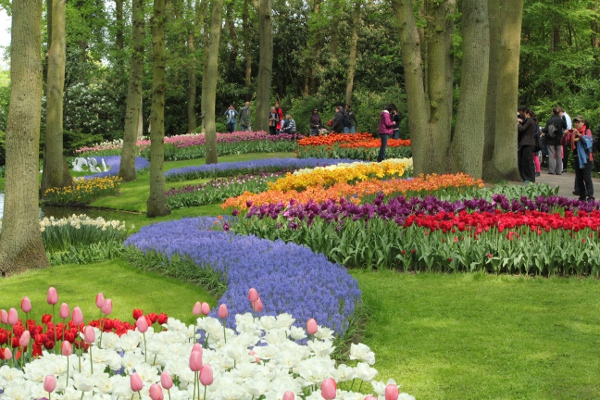|
Brilliant Bulbs |
||
|
Bulbs are a wonderful way to give your garden a face lift after a long winter. They spring up just as the weather is changing from cold to warm, no other group of plants can provide such a display of colour with such ease. Most planted bulbs improve with age and require very little care.
|
||
|
Getting Started Bulbs can be planted from the February right through to the end of Autumn. By planting continuously through this period, you will be rewarded with a continuous floral display come spring.
Soil Preparation Good drainage is the paramount soil requirement. Work in sand/pumice if drainage is poor. Mix bulb fertilizer into the soil.
If bulbs are being grown in pots, use Daltons Premium Potting Mix for best results. Remember that pots dry out rapidly, and they may need to be watered frequently if the season is dry.
How to Plant Plant bulbs at a depth of twice the length of the bulb. For example if the bulb is 3cm in length plant at a depth of 6cm. It is a good idea to place bulbs in a bulb basket and bury the basket into your garden as a measure to find your bulbs at lifting time.
Plant Protection Slugs and Snails are the main pest of bulbs. Bulbs especially need protection when the leaves are just emerging from the ground. Use a slug and snail bait to control this problem.
Storage Lift and store if necessary. Bulbs should be left alone in the garden until their leaves have died off. Bulbs draw the nutrients from the leaves and store it in the bulb for next season. Removing leaves too early results in poor quality plants and flowers. Bulbs can be left in the ground for many years, and don’t need to be lifted unless they become overcrowded. Tulips need to be lifted and should be stored in the fridge for at least 6 week All bulbs should be stored in a dark, dry, cool place.
Gladioli
Every year at Big Jims we get a lovely range of Gladioli bulbs, whether you mass plant one colour or a mixed selection you will be pleased with the result.
When to Plant Plant any time from July to December. Gladioli flower around 100 days after planting. By staggering your planting you can have flowers from November to April. Mass plantings really produces the best show. Mixed or single colour groups of 25 bulbs or more can really make a striking display.
Where to Plant Plant in full sun, they can tolerate a range of soil types but do prefer good drainage.
How to Plant Prepare soil using the same method as for spring bulbs. Plant corms 15cm deep and 12cm apart in groups of 25 corms or more for good effect. Plant corms with the scar from last year roots facing downwards. During the growing season water well in dry periods, feed with Bulb feltiliser at the 50 day mark for plentiful flower development.
Plant Protection Sap sucking insects that are around in the summer like Thrips and Aphids can be a problem in the dry weather. Use Yates Confidor for control of these insects.
Storage Corms should be lifted if necessary as soon as foliage turns yellow, cut the tops of the foliage off immediately, close to the corm. Leave them to dry in the sun. Remove the old roots when dry, in 2-3 weeks.
Tuberous Begonia
These are beautiful large summer flowering corms. Many colours are available, most with double ruffled flowers.
Getting Started They like to grow in sheltered areas with semi-shade careful watering will be required to not let them dry out. They should be planted in early spring and dug up and dried over winter. Generally the flowers are so heavy (due to their size) that they hang down. So it is the perfect thing to grow in a hanging basket. TIP: Always pick off the "single" flowers to allow the "double" to flourish. |
         |
|
